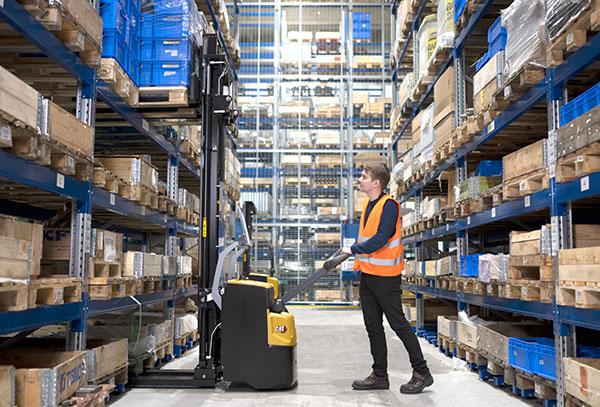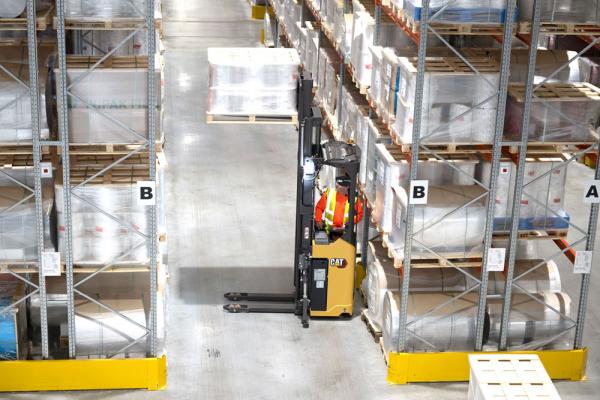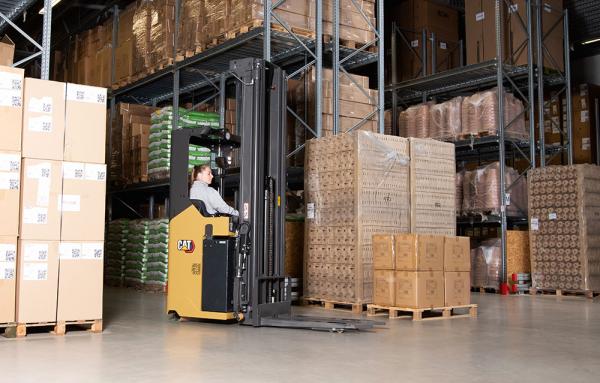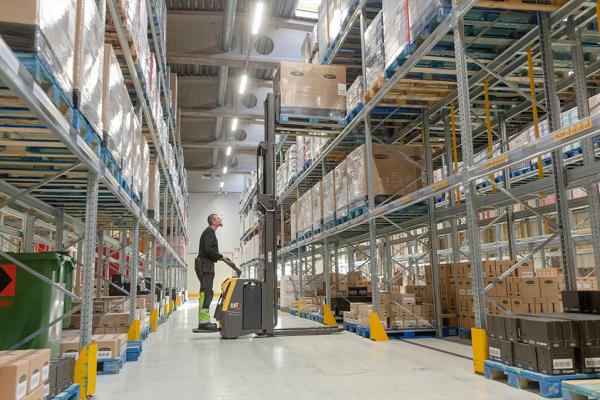What stacker type will best suit your materials handling application?
Would you like to pay less for your lift truck? Do you want to make fuller use of your valuable warehouse space? And is versatility important in your choice of materials handling equipment? These are all good reasons to choose a stacker.
To stack, retrieve and transport palletised goods, you might just use a counterbalance forklift truck – if your warehouse aisles are wide. A more specialised, space-saving option for tall racking and narrow aisles would be a reach truck. A stacker costs much less than either of those trucks.
Stackers are also more compact than reach trucks, so you can reduce your aisle width and increase your storage density. And as well as high lifting, a stacker is handy for other duties like transport and order picking.
Of course, there are lots of applications for which reach trucks are ideally suited. That’s why Cat® Lift Trucks makes so many of them. Their specialised capabilities are explained in a separate article Eureka magazine. But if you don’t really need those specialisms, why pay more than you need to?
Cat® Stacker categories
When it comes to choosing a stacker, you should again be open-minded to the different possibilities on offer. There are four main stacker categories: pedestrian, platform, stand-in (sometimes called stand-on) and sit-on. Their purchase, rental or leasing prices ascend in that order. As aways, price is just one factor to consider when deciding which truck will be most profitable. Knowing the total cost of operation (TCO) and productivity advantages of each option is crucial to making the best choice.
With their highly compact footprint, stand-in stackers give you the highest storage efficiency. Pedestrian stackers are next best in that respect, followed by platform stackers. Sit-on stackers save space too, but their main benefits relate more to power and comfort.
Stand-in and sit-on stackers have key productivity advantages. This is not only because they tend to be more powerful, with faster travel, higher lifts and stronger residual capacities. It’s because they fully enclose the operator, safe within their robust structure. He or she can move quickly through narrow aisles, confident of that protection. There is also no need for stops to fold and unfold platforms and side bars.
Another factor to address is how much the stacker will be used and over what distances. Pedestrian stackers have a slower travel speed but they’re great for short shuttle work. Platform stackers drive faster and add vibration-damped, ride-on comfort for longer and more frequent shuttle runs. Both pedestrian and platform stackers have multiple, flexible uses, and offer a wide and varied model choice. Stand-in stackers are more comfortable still, while sit-on models provide seated luxury for the longest distances and shifts of all.
Compare stackers in detail
Of course, there are many other variables to weigh up before making your decision. Further advice can be found in our Eureka article on the subject. You can also compare the features and benefits of each stacker category in detail by visiting our website’s stackers page.



